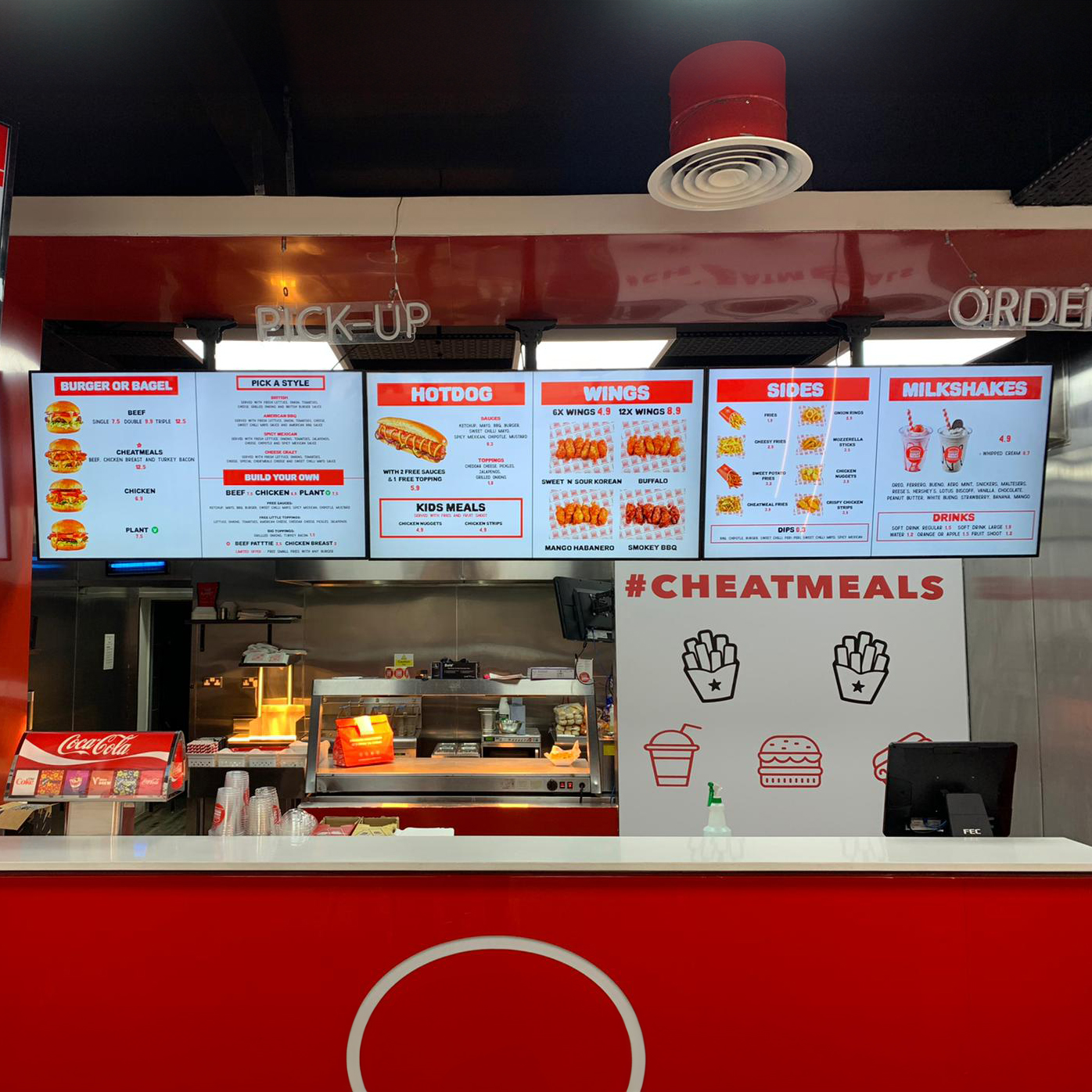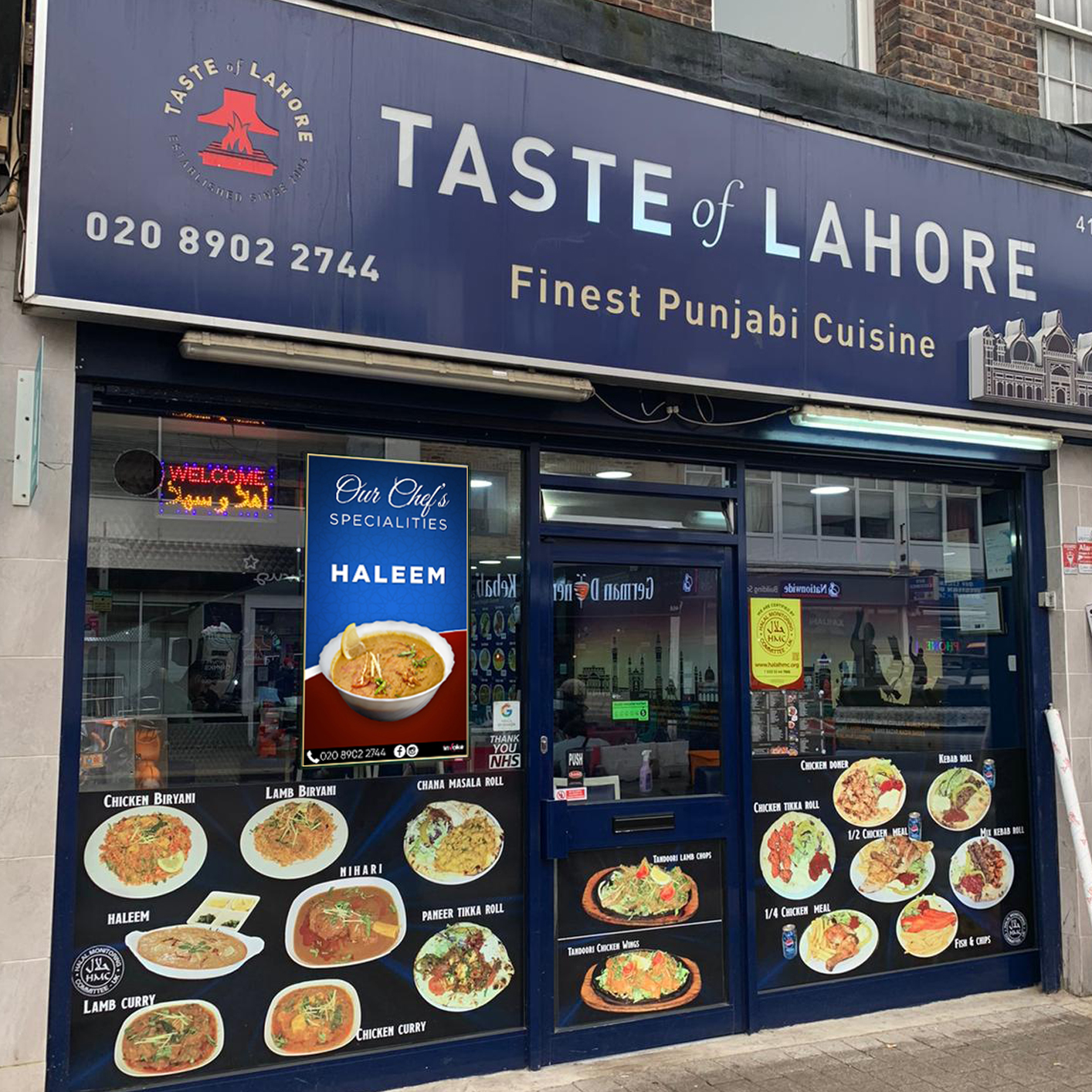Commercial Grade, 24/7 use, display sizes 32” to 75”, Landscape/Portrait. Ideal to promote your products, services and special offers.
Upload content to the inbuilt android media player via USB or Cloud CMS and schedule different content to play at different times of the day, add scrolling text, video and animation to create a dynamic visual display.
inVoke Digital Signage offer a qualified professional installation service and our in-house Design Studio will create AWESOME content for you that you can also use on your website and social media campaigns.
Grab Attention & BOOST Sales
Digital Signage, in particular Window digital signage, is a great way for you to attract new customers and engage with passers-by.
Restaurant Signage that’s easy to use
Our high-quality Digital Signage solutions are designed to be quick and easy to use – both for you and your customers.
With our network-compatible digital menu boards, you can update in real time menu items, prices, allergens, nutritional information and more, all with the click of a button. No more worrying about print costs or writing out new dinner menus! What’s more, our Digital Signage screens allow you to synchronise content. This means your content can be used over multiple screen types, rooms and even branches of your café or restaurant business.
Our Digital Signage helps you provide a streamlined and hassle-free service, thereby improving customer experiences and your bottom line.
“We have inVoke Digital Menu boards in our branches. They offer great products, service and prices.”
Cheatmeals
“inVoke menu boards grab the attention of our customers the moment they walk in the door. It’s so easy to update our daily offers. Best thing we ever did.”
Mattishall Golf Club
Cheatmeals
Mattishall Golf Club
Our Clients
Here are just a few examples of our clients who have attracted more customers with the help of our café and restaurant Digital Signage.
Contact us today to find out how you can do the same!
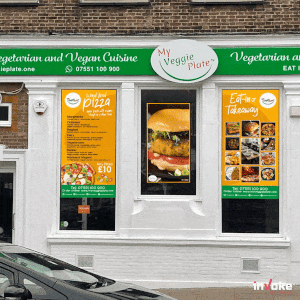
My Veggie Plate
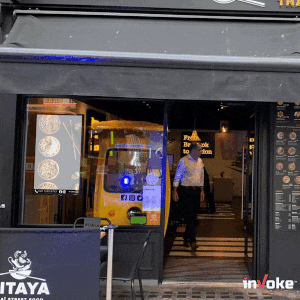
The Burger Club
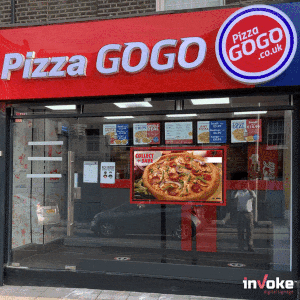
Pizza GoGo
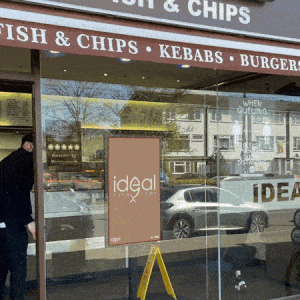
Ideal Fish & Chips

